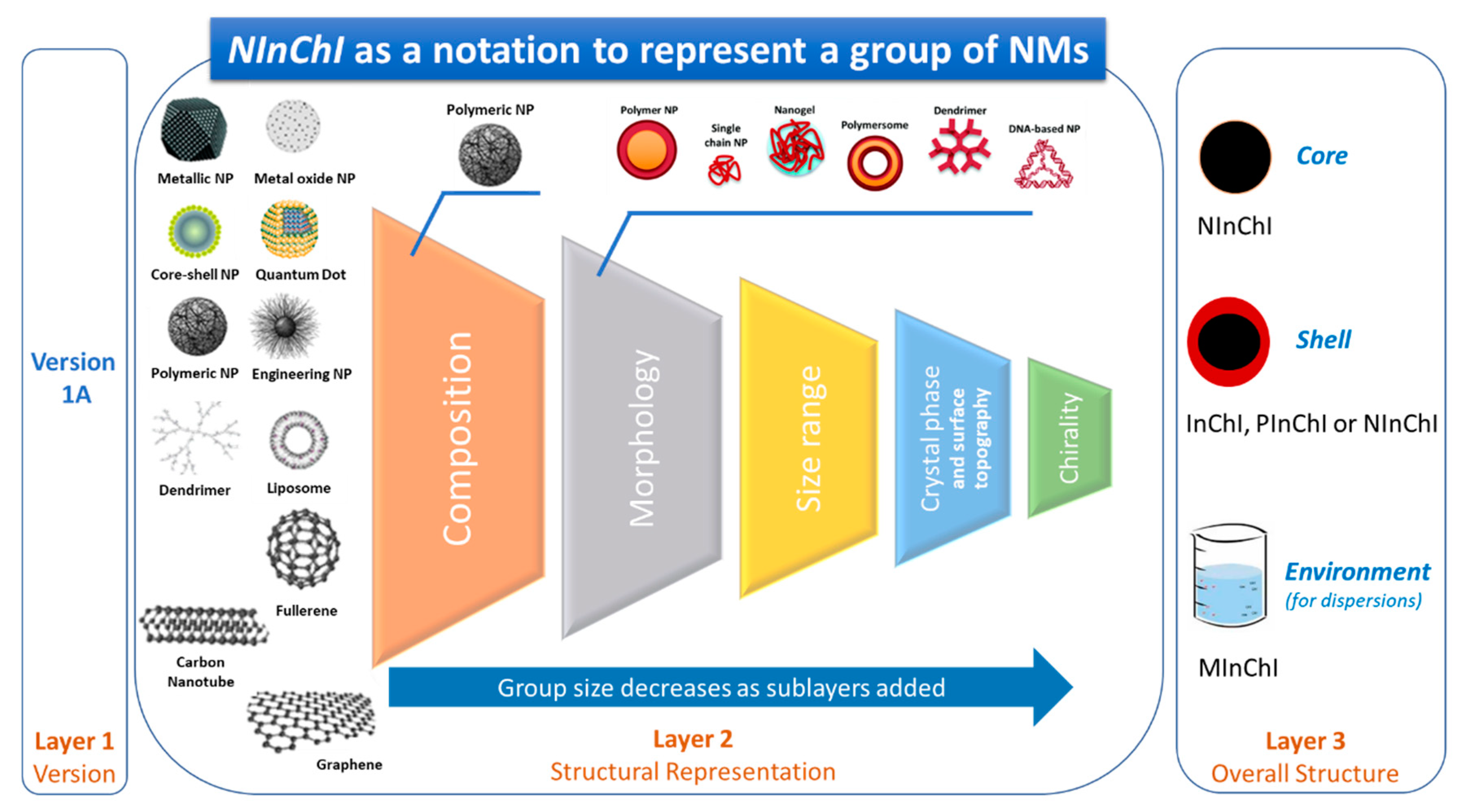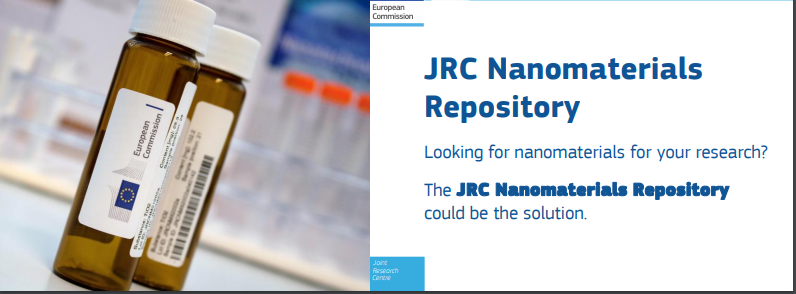Nanomaterial identifiers and structural representations
The following is a list of preferred nanomaterial identifiers to be used in datasets, publications, websites,… to allow quick retrieval of all information available for a specific material or group of materials (e.g. nanoform).
Table of contents
European Registry of Materials
 The European Registry of Materials (van Rijn et al., 2022) is a simple registry with the sole purpose to mint material identifiers to be used by research projects throughout the life cycle of their project. The identifier is nothing more than that identifier, and not by default linked to any information. Think of it as a pre-registration of the intention to study the material.
The European Registry of Materials (van Rijn et al., 2022) is a simple registry with the sole purpose to mint material identifiers to be used by research projects throughout the life cycle of their project. The identifier is nothing more than that identifier, and not by default linked to any information. Think of it as a pre-registration of the intention to study the material.
InChI for Nano or NInChI
 NInChI (Lynch et al., 2020) is developed as an extension to the IUPAC International Chemical Identifier (InChI) as a computer-readable line representation of nanomaterials covering important properties to characterise a material and differentiate nanoforms. It will become part of the InChI universe and be establised as a standard identifier to be used in research, risk assessment and regulation.
NInChI (Lynch et al., 2020) is developed as an extension to the IUPAC International Chemical Identifier (InChI) as a computer-readable line representation of nanomaterials covering important properties to characterise a material and differentiate nanoforms. It will become part of the InChI universe and be establised as a standard identifier to be used in research, risk assessment and regulation.
Publication on the NInChI prototype
NInChI generated according to the prototype definition Slides of a presentation introducing the NInChI prototype server
Demonstration Case developing the NInChI
If you want to be added to the NInChI working group mailing list, please contact info@sevenpastnine.com
See also:
- Nanomaterials working group of InChI Trust
- CODATA Initiative: Extension of InChI for Nanomaterials
- NInChI project of the Versailles Project on Advanced Materials and Standards (VAMAS) TWA 34 Nanoparticle Population
EC Joint Research Centre Nanomaterials Repository
 The JRC hosts a repository of representative industrial nanomaterials (NM) including nanomaterials studied in the OECD testing programme and large research projects. Each type of material in the repository has been sourced as a large single batch which has been sub-sampled into individual vials to produce the first collection of thoroughly characterised nanomaterials available for benchmarking in research and regulatory studies.
The JRC hosts a repository of representative industrial nanomaterials (NM) including nanomaterials studied in the OECD testing programme and large research projects. Each type of material in the repository has been sourced as a large single batch which has been sub-sampled into individual vials to produce the first collection of thoroughly characterised nanomaterials available for benchmarking in research and regulatory studies.
List of Representative Nanomaterials (with their main physical characteristics)
References
- Lynch et al., 2020: Lynch, I.; Afantitis, A.; Exner, T.; Himly, M.; Lobaskin, V.; Doganis, P.; Maier, D.; Sanabria, N.; Papadiamantis, A. G.; Rybinska-Fryca, A.; Gromelski, M.; Puzyn, T.; Willighagen, E.; Johnston, B. D.; Gulumian, M.; Matzke, M.; Green Etxabe, A.; Bossa, N.; Serra, A.; Liampa, I.; Harper, S.; Tämm, K.; Jensen, A. C.; Kohonen, P.; Slater, L.; Tsoumanis, A.; Greco, D.; Winkler, D. A.; Sarimveis, H.; Melagraki, G. Can an InChI for Nano Address the Need for a Simplified Representation of Complex Nanomaterials across Experimental and Nanoinformatics Studies? Nanomaterials 2020, 10 (12), 2493. https://doi.org/10.3390/nano10122493.
- van Rijn et al., 2022: van Rijn, J.; Afantitis, A.; Culha, M.; Dusinska, M.; Exner, T.E.; Jeliazkova, N.; Longhin, E.M.; Lynch, I.; Melagraki, G.; Nymark, P.; Papadiamantis, A.G.; Winkler, D.A.; Yilmaz, H.; Willighagen, E. European Registry of Materials: global, unique identifiers for (undisclosed) nanomaterials. J. Cheminform. 2022, 14, 57. https://doi.org/10.1186/s13321-022-00614-7.